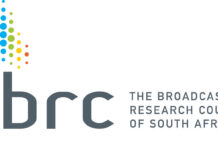Earlier this year, many search engine optimisation (SEO) specialists globally were of the opinion that traditional SEO practices were making an exit because of the rise of artificial intelligence (AI). Headlines read, “SEO Is Dead. Long Live AO” or “Is SEO Dead in 2024? Shocking Facts Revealed!”.
Is SEO really dead? At Flow Communications, we think that traditional SEO practices are still needed, but that they can be enhanced and made faster with the advancement of AI.
SEO is constantly evolving to enhance the user’s experience online. However, the basics like writing quality content, optimising your images, checking the health of your links and understanding Google’s constant experiments remain important, even as the technological tools underpinning the search experience improve.
So, if you’re new to SEO, this article is for you. We manage a number of websites for clients, and part of the process is ensuring that the site has a healthy SEO footprint. Here are 10 quick tips to improve your website’s SEO.
- AI-driven SEO solutions
Search engines like Google are already using AI tools to enhance users’ search experience. According to Search Engine Journal, “Google is experimenting with AI-powered Circle to Search, Search Generative Experience (SGE), and tools for creativity and productivity in [Search] Labs.”
When implementing SEO best practices on your website, don’t be afraid of using AI solutions. Use tools like ChatGPT to come up with keyword ideas or phrases, or consider using Grammarly’s free writing tool that can help check your content as you write. Be sure to check AI-generated content before publishing to make sure it’s factual and will be useful to your audience.
- Understanding SGE
Search Generative Experience (SGE) is still in its trial phase but if we know anything about Google, it’s going to be all about improving the search experience for humans. In January 2024, Google explained that using generative AI while searching gives the user better results. If someone was looking for a particular recipe, for example, they’d receive some of the best options with a short summary, thanks to AI.
“SGE is a more interactive experience than traditional search,” explains Semrush. “Google suggests not just related questions, but logical follow-up queries to help users obtain highly relevant and in-depth information with just a few clicks.”
For now, having an understanding of how SEO works and how it will affect the SGE will help your website rank well on the search engine results pages (SERPs). Watch this space!
- Know your brand
If you know your brand, you won’t have a problem with sourcing or coming up with quality keywords for your website. What are keywords? Says SEO website Moz.com, “Keywords are ideas and topics that define what your content is about. In terms of SEO, they’re the words and phrases that searchers enter into search engines to discover content, also called ‘search queries’.”
If you know what your customers want and the kind of information they need, you should be able to come up with a strong keyword strategy.
- Create excellent content
According to Kristopher Jones, founder of LSEO, “No matter how niche or mainstream your market is, great content remains a significant focus for SEO.” He’s spot on. Great content will not only help improve your SEO, but will also bring quality leads to your website – and hopefully, these will turn into conversions or clients.
Don’t write content that you think will impress Google’s algorithms. Write for the people who will find your services or content useful.
- Check the top 100 pages on your website
Every quarter, make a habit of checking and updating the SEO on your website’s top 100 pages. Download the data on your site’s top 100 pages from Google Analytics, and then check everything from the hyperlinks in the article to headings, copy, images and meta-data on the back end.
You’re looking for broken links, low-quality images that need changing, better keyword usage on the page – and generally making sure that a user will find the page useful and easy to navigate.
- Ditch dodgy links
Fix broken links as often as you can. Use free tools like Screaming Frog or Google Search Console to check which links are no longer working, and then fix them.
It all comes down to the user experience – if a person clicks a broken link, the likelihood of them leaving your site increases. The more people Google sees leaving that page (because of broken links), the more likely you are to lose your position on the SERP.
- Images are the forgotten SEO gem
If you take anything from this article, it’s that you need to strive for quality content on your website. This includes using high-resolution images and having good image SEO on the back end of your site.
Quick wins include using keywords in the image file name and also in the alt text. Write naturally when adding keywords, while also being sure to describe what is in the image. Here’s an example of good image SEO:

- Check your website speed
We live in a fast-paced world where the speed of your service matters. If your website takes too long to load, a user may opt to go to another website. Hire a developer to speed up your site. Check that your images are not too large, either; large images will slow down your website. Here’s an excellent cheat sheet when it comes to sizing your images: https://tiny-img.com/blog/best-image-size-for-website/
- Optimise your video SEO, too
If you have any videos on your website, be sure to optimise them as you would your text and image content. Create excellent video content that is helpful for users and answers their questions, while being visually appealing and not too long. Use the footage to create a good thumbnail. Make sure that you have keywords in your heading and video description. And if possible, host the video on a platform like YouTube.
- Stay knowledgeable about the state of SEO
Keep up to date with the state of SEO by following and consulting reputable sources. Here are some handy resources to get you started:
- https://moz.com/beginners-guide-to-seo
- https://developers.google.com/search/blog/2024/03/core-update-spam-policies
- https://searchengineland.com/library
- https://yoast.com/seo-blog/
- https://ahrefs.com/blog/
- https://search.google.com/search-console/about
_______
Nadia Moore is the head of marketing at Flow Communications, one of South Africa’s leading independent marketing and communications agencies with a permanent team of over 60 professional staff.
About Flow Communications
Flow Communications is one of South Africa’s leading independent marketing and communications agencies.
Flow tackles marketing and communications challenges with a full suite of services, including public relations, social media, media and communications training services, brand, print and digital.
Flow was founded in 2005 and now has a permanent team of over 60 professional staff. It is a certified member of WEConnect International, a global association of majority women-owned businesses, and a member of thenetworkone, the world’s largest network of independent creative, media, public relations and marketing agencies. Flow has a level 1 B-BBEE rating and has won over 150 industry awards.




















































































